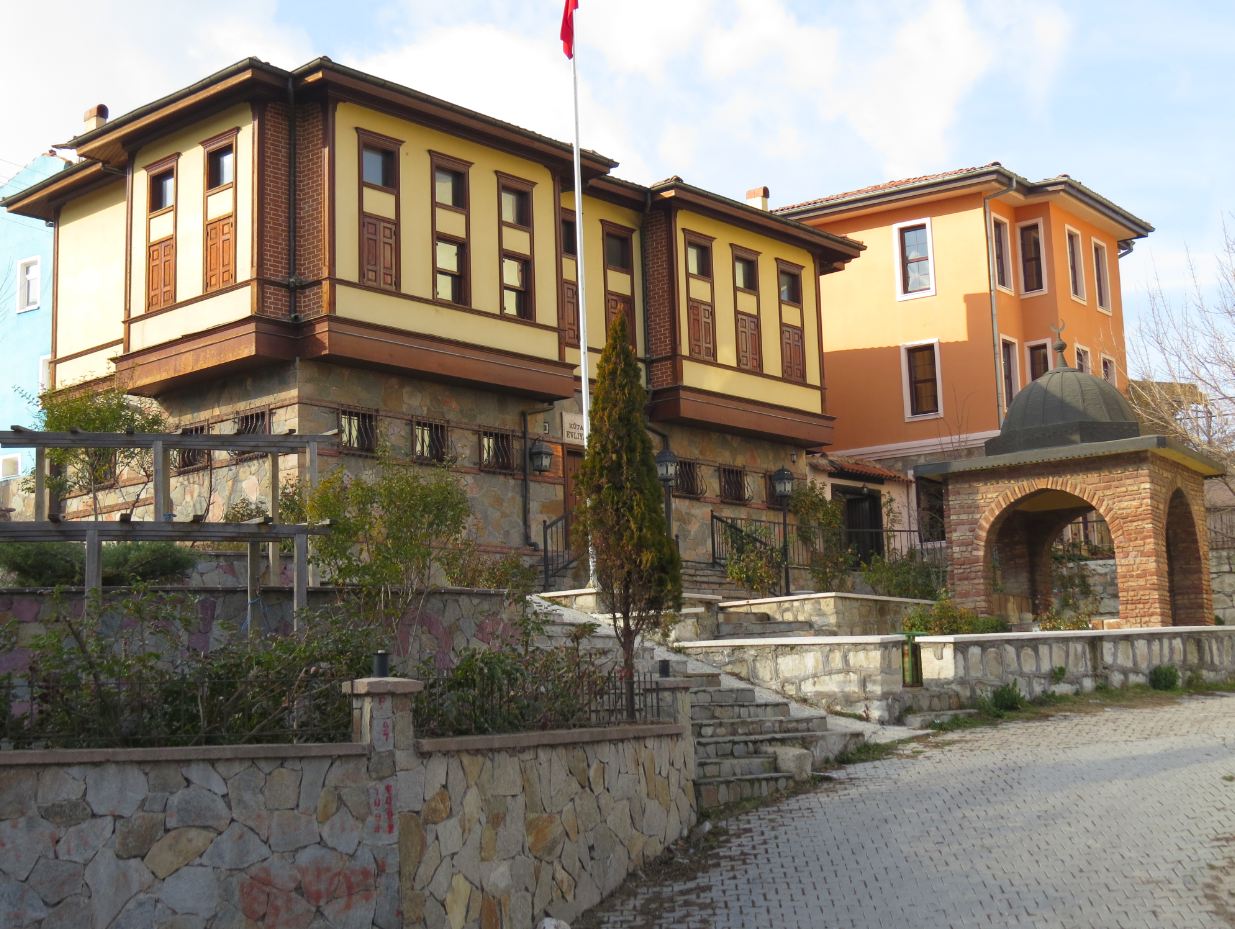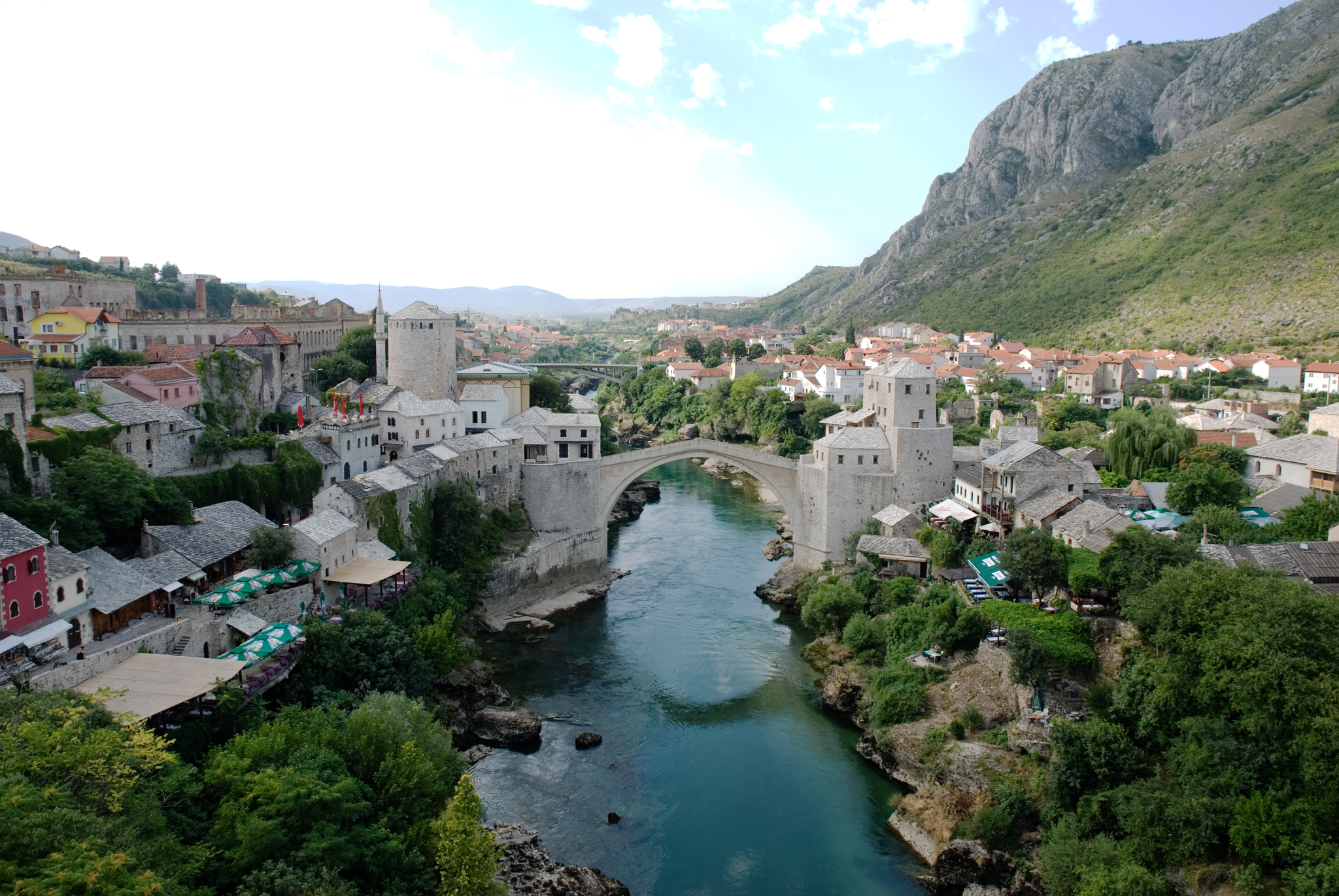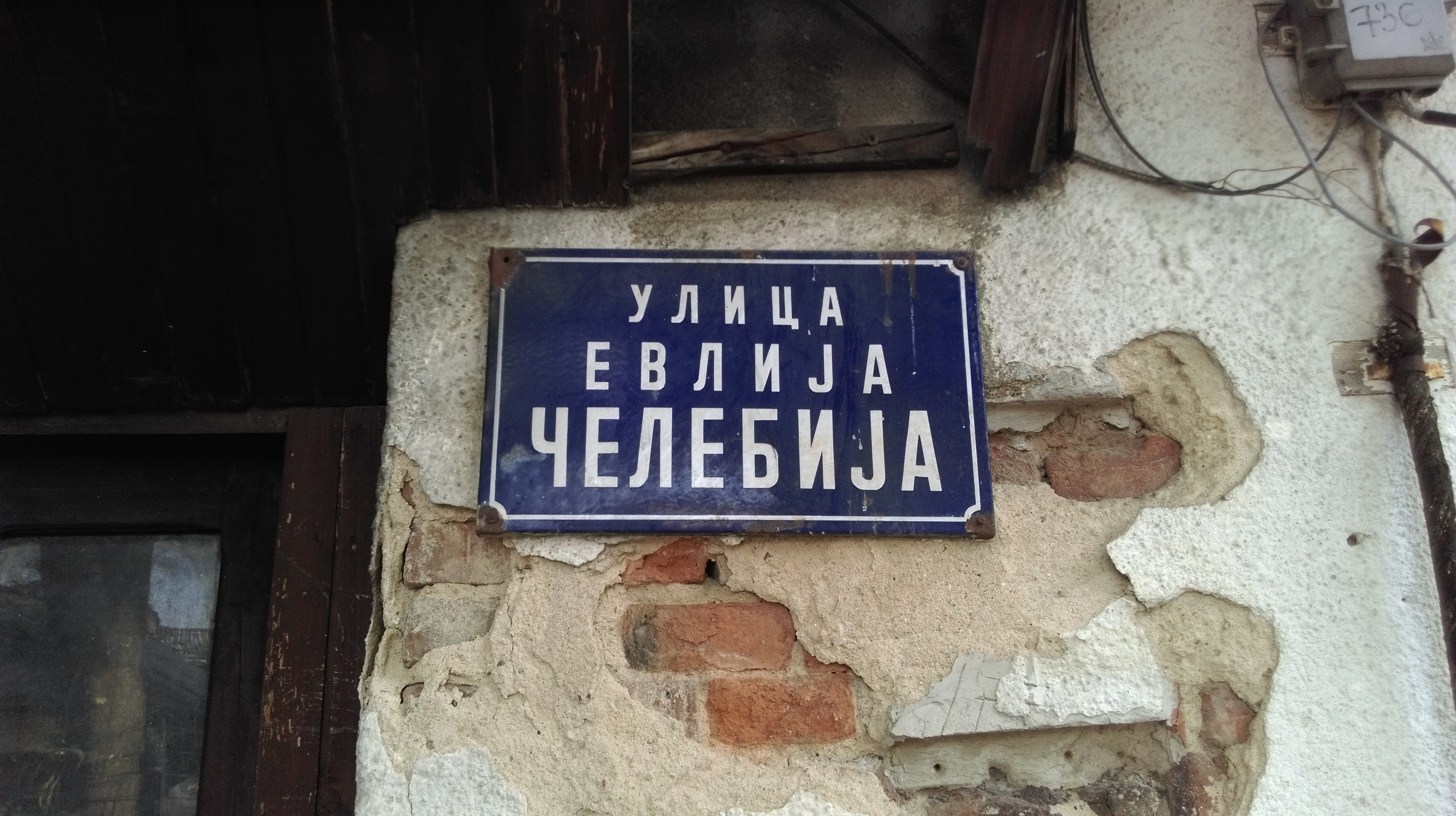1. Life
Evliya Çelebi's life was marked by a privileged upbringing, a comprehensive education, and an insatiable desire for travel, which he pursued despite opportunities for a static court career.
1.1. Early Life and Family
Evliya Çelebi was born in Istanbul (then Constantinople) on March 25, 1611, into a wealthy family originally from Kütahya. His parents maintained close ties with the Ottoman court. His father, Dervish Mehmed Zillî, served as an Ottoman jeweller, while his mother, an Abkhazian, was related to Melek Ahmed Pasha, who later became the Grand Vizier of Mehmed IV. In his extensive travelogue, Evliya Çelebi traced his paternal lineage back to Ahmad Yasawi, an early Sufi mystic and one of the earliest known Turkic poets.

1.2. Education and Sufi Affiliations
Çelebi received a comprehensive court education from the Imperial Ulama (scholars). He also pursued studies in music, becoming a pupil of 'Umar Gulshani, a renowned Khalwati dervish. His musical talents, including training in the theory of music called ilm al-musiqiilm al-musiqiTurkish, Ottoman, earned him considerable favor at the Imperial Palace, even impressing the chief musician Amir Guna. He may have been affiliated with the Gulshani Sufi order, as evidenced by his intimate knowledge of their khanqah in Cairo and a graffito where he referred to himself as Evliya-yı Gülşenî ("Evliya of the Gülşenî").
1.3. Court Career and Religious Views
Despite his employment as a clergyman and entertainer at the Imperial Court of Sultan Murad IV, Evliya Çelebi consistently refused any position that would restrict his ability to travel. He was a devout Muslim who strongly opposed fanaticism. He possessed the remarkable ability to recite the Quran from memory and was known for his free and often humorous remarks about Islam.
1.4. Travel and Military Engagements
Evliya Çelebi's passion for exploration led him to begin documenting his experiences in Istanbul in 1640, initially focusing on the city's buildings, markets, customs, and culture. His notes soon expanded to include accounts of his journeys beyond the city's confines, marking the beginning of over four decades of extensive travel. Beyond his role as an observer and writer, Çelebi also participated in various Ottoman military campaigns, including the Fourth Austro-Turkish War in Hungary.
1.5. Death
The exact year and location of Evliya Çelebi's death remain uncertain, though it is generally estimated to have occurred around 1682. It is unknown whether he died in Istanbul or Cairo.
2. Travels and the Seyahatnâme
Evliya Çelebi's extensive journeys, spanning over four decades, culminated in his monumental travelogue, the Seyahatnâme, which offers a panoramic view of the 17th-century world.
2.1. Introduction to the Seyahatnâme
The Seyahatnâme ("Book of Travel") is Evliya Çelebi's masterpiece, a ten-volume work that stands as one of history's longest and most ambitious accounts of travel writing. It meticulously details his journeys across the vast Ottoman Empire and beyond, serving as a crucial historical record of the 17th century. While some descriptions within the Seyahatnâme are characterized by exaggeration or even inventive fiction, the work remains an invaluable guide to the culture, lifestyles, and geography of the era. The first volume is dedicated exclusively to Istanbul, while the final volume focuses on Egypt.
2.2. Major Journeys and Regional Accounts
Evliya Çelebi's travels took him through a diverse array of regions, each meticulously documented in his Seyahatnâme. His journeys included:
- Constantinople and surrounding areas (1630)
- Anatolia, the Caucasus, Crete, and Azerbaijan (1640)
- Syria, Palestine, Armenia, and Rumelia (1648)
- Kurdistan, Iraq, and Iran (1655)
- Russia and the Balkans (1656)
- Military campaigns in Hungary during the Fourth Austro-Turkish War (1663-1664)
- Austria, the Crimea, and the Caucasus for a second time (1664)
- Greece and then the Crimea and Rumelia for a second time (1667-1670)
- The Hajj to Mecca (1671)
- Egypt and the Sudan (1672)
2.2.1. Europe
Çelebi's European travels provided unique observations. During his 1663 visit to Rotterdam, he claimed to have encountered Native Americans, who, according to his account, "cursed those priests, saying, 'Our world used to be peaceful, but it has been filled by greedy people, who make war every year and shorten our lives.'" In Vienna in 1665-1666, Çelebi noted similarities between words in German and Persian, an early observation of the relationship between what would later be recognized as two Indo-European languages. He also visited Crete, describing the fall of Chania to the Sultan in Book II and recounting the Candia campaign in Book VIII.
2.2.2. Balkans
Çelebi extensively documented his travels through the Balkan peninsula. In modern-day Croatia, he visited northern Dalmatia, parts of Slavonia, Međimurje, and Banija, recording a variety of historiographic and ethnographic details, including first-hand encounters, third-party accounts, and some invented elements.

In Mostar, then part of Ottoman Bosnia, he noted that the town's name meant "bridge-keeper," referring to its famous Stari Most bridge, which he described as "like a rainbow arch soaring up to the skies, extending from one cliff to the other. ...I, a poor and miserable slave of Allah, have passed through 16 countries, but I have never seen such a high bridge. It is thrown from rock to rock as high as the sky." The bridge is 92 ft (28 m) long and 66 ft (20 m) high.
In the northeast of Bulgaria, specifically in Dobruja, Çelebi referred to the region as Uz (Oğuz) and documented a Turkish-speaking Muslim community known as Çıtak. He described them as cheerful and strong people living in Silistra, also known as the "Dobruca Çitakları," and noted that the "Çıtaklar" were a mixture of Tatars, Vlachs, and Bulgarians.
In Kosovo in 1660, Çelebi referred to the central part of the region as Arnavud (آرناوودArnavudTurkish, Ottoman) and observed that in Vushtrri, inhabitants spoke Albanian or Turkish, with few speaking Bosnian. He considered the highlands around Tetovo, Peja, and Prizren as the "mountains of Arnavudluk" and the "mountains of Peja" as being in Arnavudluk (آرناوودلقArnavudlukTurkish, Ottoman). He viewed the Ibar river converging in Mitrovica as forming Kosovo's border with Bosnia and included the central mountains of Kosovo within Arnavudluk. He also considered the "Kılab" or Llapi river as having its source in Arnavudluk (Albania), by extension including the Sitnica as part of that river.
Çelebi traveled extensively throughout Albania on three occasions. In 1662, he visited Tirana, Lezha, Shkodra, and Bushat. In 1670, his journeys included Delvina, Gjirokastra, Tepelena, Skrapar, Përmet, Berat, Kanina, Vlora, Bashtova, Durrës, Kavaja, Peqin, Elbasan, and Pogradec.
In 1667, Çelebi expressed profound marvel at the sculptures of the Parthenon in Athens, describing the building as "like some impregnable fortress not made by human agency." He composed a poetic supplication that the Parthenon, as "a work less of human hands than of Heaven itself, should remain standing for all time."
2.2.3. Anatolia
His second volume of the Seyahatnâme is dedicated to Anatolia, documenting its cities, regions, cultural practices, and local folklore. This section of his work provides a detailed ethnographic and geographical account of the heartland of the Ottoman Empire.
2.2.4. Caucasus and Central Asia
Çelebi traveled to Circassia in 1640, where he commented on the beauty of the women and noted the surprising absence of mosques and bazaars despite it being a Muslim country. He praised the hospitality of the Circassians but found their language difficult to transcribe, comparing it to a "magpie shout." In Shirvan, specifically Baku, he observed the oil merchants: "By Allah's decree oil bubbles up out of the ground, but in the manner of hot springs, pools of water are formed with oil congealed on the surface like cream. Merchants wade into these pools and collect the oil in ladles and fill goatskins with it, these oil merchants then sell them in different regions. Revenues from this oil trade are delivered annually directly to the Safavid Shah."
2.2.5. Middle East: Syria, Palestine, and Arabia
In contrast to many European and Jewish travelogues of the 17th century, Çelebi's accounts of Syria and Palestine offer a unique and detailed perspective from an Islamic point of view. He visited Palestine twice, in 1649 and again in 1670-1671. His writings contain numerous references to Palestine, or "Land of Palestine," with Evliya noting, "All chronicles call this country Palestine." An English translation of parts of his Palestinian travels was published between 1935 and 1940 by the Palestinian scholar Stephan Hanna Stephan. In Mecca, Evliya reported that the sheriffs actively promoted trade by encouraging fairs for wealthy merchants, leading to significant buying and selling during the Hajj pilgrimage season.
2.2.6. North Africa
The final volume of the Seyahatnâme details Çelebi's expeditions into North Africa, specifically his observations and experiences in Egypt and the Sudan.
2.2.7. Other Regions (Crimea, Russia, etc.)
Evliya Çelebi also traveled to regions such as the Crimean Khanate and Russia. He remarked on the devastating impact of Cossack raids from Azak on the Crimean territories, which destroyed trade routes and severely depopulated regions. By the time of Çelebi's arrival, many towns were affected, with the Ottoman fortress at Arabat being the only place he reported as safe in Crimea. He provided a vivid account of the slave trade in Crimea: "A man who had not seen this market, had not seen anything in this world. A mother is severed from her son and daughter there, a son-from his father and brother, and they are sold amongst lamentations, cries of help, weeping and sorrow." Çelebi estimated that there were approximately 400,000 slaves in Crimea, compared to only 187,000 free Muslims.
2.3. Content and Characteristics of the Seyahatnâme
The Seyahatnâme is celebrated for its diverse content, encompassing detailed descriptions of architecture, music, folklore, and social structures. Çelebi's narrative style is distinctive, often blending factual reporting with elements of exaggeration or outright inventive fiction. For instance, he included two chapters specifically on musical instruments. Despite these embellishments, his notes remain an invaluable resource for understanding the daily life and cultural nuances of the 17th-century Ottoman Empire.
2.4. Linguistic Contributions
One of Evliya Çelebi's most significant contributions was his meticulous effort to document the languages and dialects he encountered during his travels. The Seyahatnâme catalogs approximately 30 Turkic dialects and languages. He noted similarities between several words from German and Persian, although he did not attribute this to a common Indo-European heritage. The work also contains the first transcriptions of many languages of the Caucasus and Tsakonian, and notably, the only extant specimens of written Ubykh outside of specialized linguistic literature. Furthermore, he wrote in detail about Arabian horses and their various strains, and his travelogue includes a detailed analysis of the Kurdish language in his Eastern Anatolian accounts.
2.5. Translations and Scholarly Reception
Despite its immense historical and cultural value, there is currently no complete English translation of the entire Seyahatnâme. The longest single English translation was published in 1834 by the Austrian orientalist Joseph von Hammer-Purgstall, covering the first two volumes (Istanbul and Anatolia), though its language is considered antiquated. Other significant translations include Erich Prokosch's nearly complete German translation of the tenth volume, and works by Robert Dankoff, such as The World of Evliya Çelebi: An Ottoman Mentality (2004) and An Ottoman Traveller: Selections from the Book of Travels of Evliya Çelebi (2010), co-translated with Sooyong Kim. Portions of the Seyahatnâme concerning specific regions like Albania, Diyarbekir, Bitlis, and Haskovo have also been translated into various other languages.
3. Impact and Legacy
Evliya Çelebi and his magnum opus, the Seyahatnâme, have left a lasting influence on historical scholarship and continue to resonate in popular culture.
3.1. Cultural and Historical Significance
The Seyahatnâme stands as an invaluable source for scholars studying the socio-cultural, geographical, and historical landscape of the 17th-century Ottoman Empire. Its detailed observations provide unique insights into the daily lives, customs, languages, and political structures of the diverse regions Çelebi visited, making it an indispensable resource for understanding the period.
3.2. In Popular Culture

Evliya Çelebi's adventures and persona have inspired various modern cultural works:
- He appears in Orhan Pamuk's 1985 novel The White Castle.
- He is featured in The Adventures of Captain Bathory (Dobrodružstvá kapitána Báthoryho) novels by Slovak writer Juraj Červenák.
- The 1996 Turkish film İstanbul Kanatlarımın Altında (Istanbul Under My Wings) depicts the lives of legendary aviator brothers Hezârfen Ahmed Çelebi and Lagâri Hasan Çelebi and 17th-century Ottoman society, as witnessed and narrated by Evliya Çelebi.
- Evliya Çelebi ve Ölümsüzlük Suyu (Evliya Çelebi and the Water of Life, 2014, directed by Serkan Zelzele) is the first full-length Turkish animated film, adapting Çelebi's adventures for children.
- In 2011, UNESCO included the 400th anniversary of Çelebi's birth in its timetable for the celebration of anniversaries, recognizing his global cultural significance.
- In the 2015 Turkish television series Muhteşem Yüzyıl: Kösem, Evliya Çelebi is portrayed by Turkish actor Necip Memili.
3.3. Named Taxa
As a tribute to his contributions to documenting the natural world and geography, a species of ray-finned fish found in drainages in western Anatolia in Turkey was named in his honor: the Lycian spring minnow, Pseudophoxinus evliyae (Freyhof & Özuluğ, 2010).